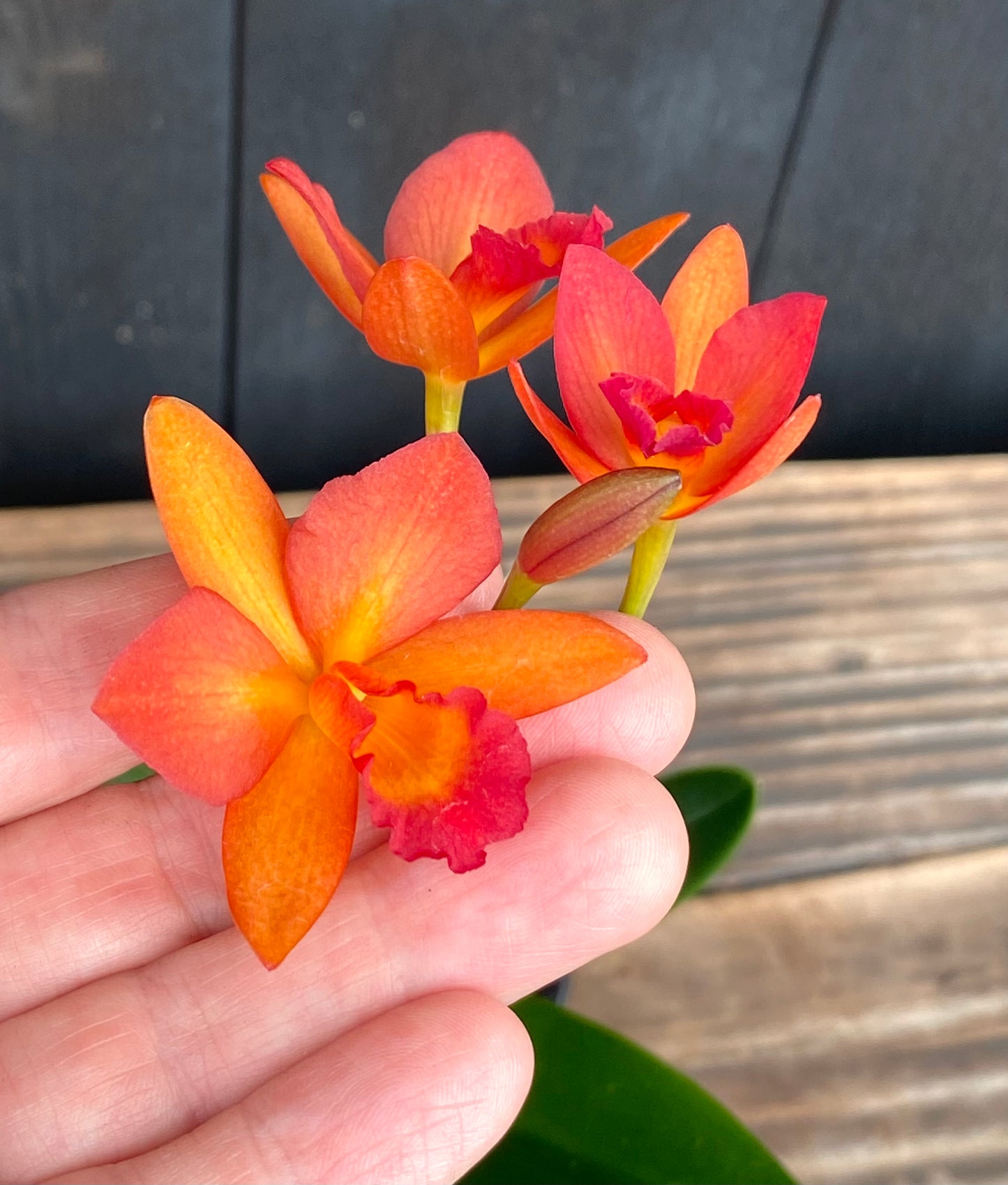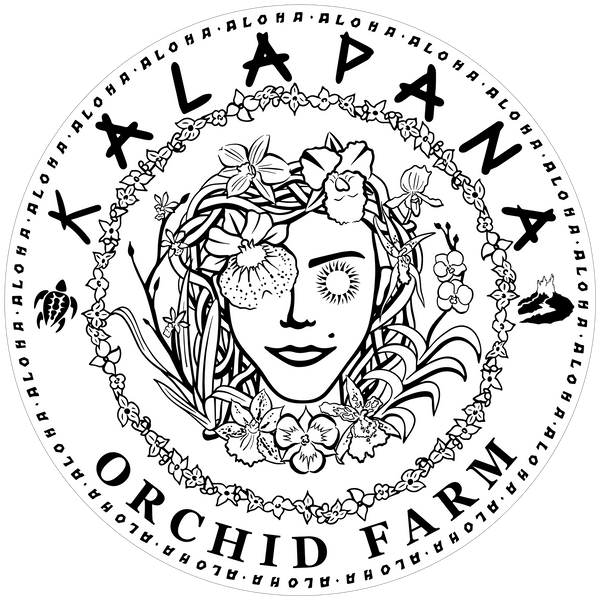Kalapana Orchid Farm
C. Harmill 'Orange Glow' x Ctna. Why Not
C. Harmill 'Orange Glow' x Ctna. Why Not
Couldn't load pickup availability
Cattleya Harmill 'Orange Glow' crossed with Cattleytonia Why Not doesn't have a registered name yet, so this intriguing cross goes by its parentage. Looking at the family tree gives us a great idea of what to expect from these seedlings. It’s a bit of a genetic treasure map.
Let's break it down. The first parent, Cattleya Harmill, is a hybrid of two compact Brazilian species: Cattleya milleri, a bright red, rock-dwelling species from the hot, sunny mountains of Minas Gerais, and Cattleya dormaniana, which grows on trees in the coastal mountains near Rio de Janeiro. This parent brings in genes for compact size, heat tolerance, and brilliant red-orange color potential.
The other parent is the famous Cattleytonia Why Not, a cross between Guarianthe aurantiaca from the seasonally dry forests of Central America and Broughtonia sanguinea from the sunny, breezy coasts of Jamaica. This parent is legendary for its hardiness, compact size, and its habit of producing vibrant clusters of star-shaped flowers multiple times a year.
So what happens when we combine them? We are anticipating a fantastic miniature to compact grower. The plant should have the slender, bifoliate (two-leaved) pseudobulbs characteristic of its entire lineage. This is a plant that won’t demand a lot of space.
The flowers are where the real excitement is. We expect clusters of blooms held on a nice spike. The shape should be a lovely, open star, and the color... well, with 'Orange Glow' and the red/orange of 'Why Not' in the mix, we are looking for some sizzling sunset shades. Expect vibrant oranges, fiery red-oranges, and maybe some bold reds. Since every seed is a unique individual, it's always a surprise to see exactly what color and form each one will produce. Based on the parentage, these should be frequent and reliable bloomers, likely flowering more than once a year.
Care Instructions
Light: This hybrid will thrive in bright, indirect light, from 2,500 to 4,000 foot-candles. An east, south, or west-facing location is ideal. The leaves should be a light olive-green; if they are too dark, it may not have enough light to bloom well. Protect from direct, hot midday sun.
Water: Excellent drainage and a distinct dry cycle are critical. This plant’s entire ancestry comes from environments with seasonal dryness. Water thoroughly and then allow the potting medium to dry out completely before watering again. It is highly intolerant of soggy roots.
Temperature: This orchid prefers warm to intermediate temperatures. Daytime temperatures between 75-85°F are ideal, with a nighttime drop to 60-65°F. It can tolerate warmer temperatures provided there is good air movement.
Humidity: Moderate humidity levels of 50% to 70% are sufficient. Crucially, this must be paired with strong air circulation to mimic the breezy conditions of its ancestors' habitats.
Potting Medium: Due to its need for sharp drainage and a quick drying cycle, this hybrid is an excellent candidate for mounting on cork or tree fern. It can also be grown in a small clay pot or basket with a very coarse, open medium like large-grade fir bark, lava rock, or charcoal.
There will be variations in these flowers as they were grown from seed. Offered in 3" pots, in spike.
Share






